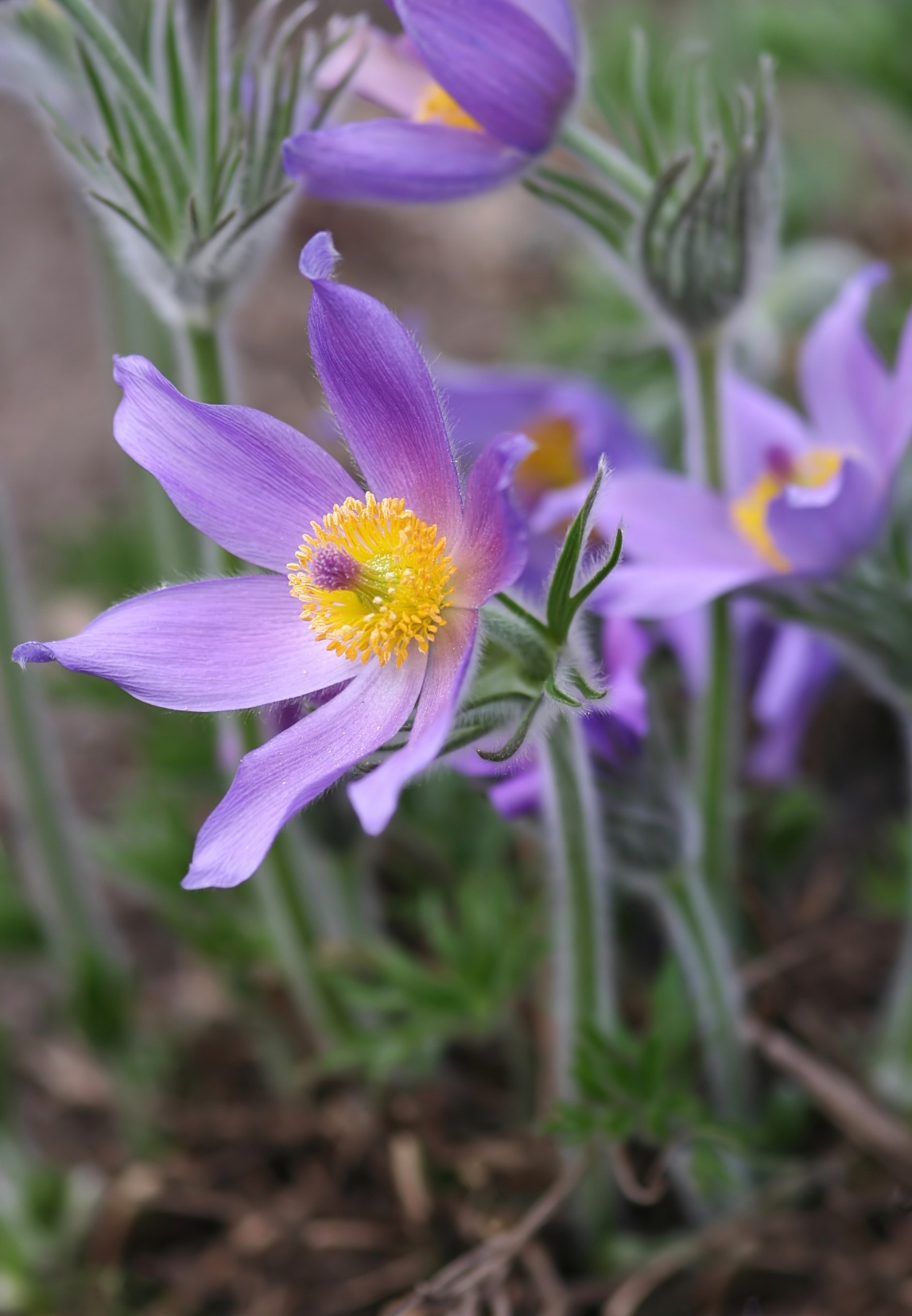
Anemone pulsatilla (L)
Synonyms: Pulsatilla vulgaris (Miller), wind flower, prairie anemone, meadow anemone, Passe flower, Easter flower, wild crocus
Order: Ranunculaceae
Description: This is a perennial herb with long-stalked leaves, covered at first with silky hairs and divided into long, thin segments. The flowerstalks are 12-20cm tall, terminating in a solitary purple flower with six silky sepals, the inner involucre projecting increasingly forward as the flower ripens. It grows in limestone pastures in central and northern Europe and parts of Russia, and locally in southern England.

Parts used: aerial parts. The dried herb should not be stored for longer than a year.
Collection: during the flowering period, in March or April.
Constituents: a lactinic glycoside (ranunculin) in the fresh plant which is converted to the acrid volatile oil aglycone protoanemonin when the plant is crushed; this in turn is converted to solid anemonin in the dried plant. Also triterpenoid saponins, tannins, anemone camphor, resin, volatile oil, chelidonic and succinic acids as calcium salts, flavonoids. Delphinidin and pelargonidin glycosides occur in the flowers.
Actions: sedative, analgesic, central nervous system depressant, nervine, alterative, spasmolytic, bactericidal
Indications: dysmenorrhoea with scanty menses, orchitis, ovaralgia, epididymitis, tension headache, hyperactive states, insomnia, boils, skin eruptions associated with bacterial infection.
Therapeutics and Pharmacology: This herb is particularly applicable to women, and is of value in neuralgia, headache and nervous exhaustion, particularly premenstrually or during the menopause. It is a specific remedy for pain and inflammation of the reproductive system, especially when this is associated with poor flow: it alleviates menstrual cramps, especially when accompanied by anxiety or irritability. It will help insomnia and general over-activity. It is applicable to inflammation and infection of both male and female reproductive organs and tissues. In men, it is used to treat orchitis and prostatitis. The tincture is also prescribed for earache. Externally, pulsatilla is used to treat skin infections, particularly boils, on account of its antibacterial action. Protoanemonin in the fresh plant is antibacterial and a strong local irritant but it is not found in the dried material; its dimer anemonin does not have these properties. The whole herb, or an extract of it, is used internally to treat inner eye conditions such as iritis, scleritis, diseases of the retina and grey or senile cataract and glaucoma.
Combinations: This herb may be combined with Chamaelirium for dysmenorrhoea; with Passiflora for headache and nervous excitability; or with Echinacea and Baptisia for skin disease and septicaemia.
Caution: Anemone should be taken only under the supervision of a qualified practitioner. It should not be used during pregnancy and lactation. The fresh plant is poisonous and should not be used. Excessive doses can cause violent gastritis.
Preparation and Dosage: (thrice daily)
Regulatory Status: GSL Schedule 1
Dried plant: 0.1-0.3g by infusion or decoction
Liquid Extract: 1:1 in 25% alcohol, 0.1-0.3ml
Tincture: 1:10 in 40% alcohol, 0.3-1ml; 1:10 in 25% alcohol, 0.5-3ml
Additional Comments: The plant is called pasque flower because it blooms at Easter. According to Greek legend, it sprang from the tears of Venus, and Dioscorides recommended its use for ophthalmia, as did Gerard and Culpeper. In homoeopathy, one of the chief symptoms associated with the herb is tearfulness, and it is used to treat catarrh, indigestion, measles and for conditions characterised by weepiness and indecision. Chinese physicians use the herb to treat diarrhoea. Pulsatilla pratensis (L.) is also used medicinally.
Bibliography
Bradley, P.R. (ed.) 1992 British Herbal Compendium, Volume 1, BHMA, Bournemouth.
BHMA 1983 British Herbal Pharmacopoeia, BHMA, Bournemouth.
Grieve, M. 1931 A Modern Herbal, (ed. C.F. Leyel 1985), London.
Hoffmann, D. 1990 The New Holistic Herbal, Second Edition, Element, Shaftesbury.
Lust, J. 1990 The Herb Book, Bantam, London.
Mabey, R. (ed.) 1991 The Complete New Herbal, Penguin, London.
Mills, S.Y. 1993 The A-Z of Modern Herbalism, Diamond Books, London.
Polunin, M. and Robbins, C. 1992 The Natural Pharmacy, Dorling Kindersley, London.
Weiss, R.F. 1991 Herbal Medicine, Beaconsfield Arcanum, Beaconsfield.
Wren, R.C. 1988 Potter's New Cyclopaedia of Botanical Drugs and Preparations, C.W.Daniel, Saffron Walden.










